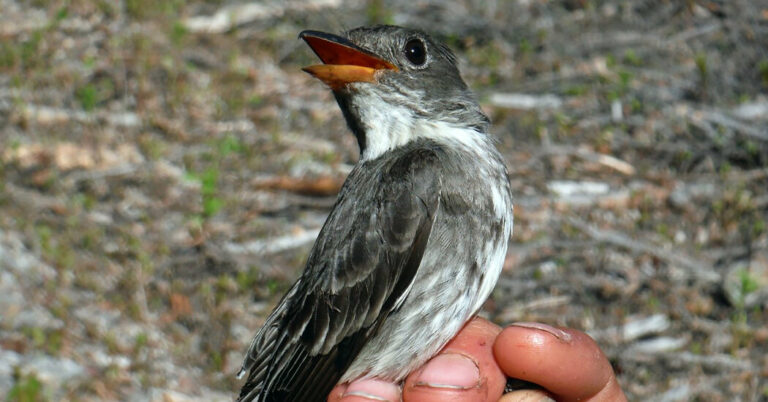Flying High and Far: The Epic Odyssey of Olive-Sided Flycatchers
Imagine packing your bags and embarking on a journey longer than the Great Wall of China – all while weighing just an ounce. That’s the reality for olive-sided flycatchers, these soot-colored songbirds that cross an astonishing 15,000-mile route from South America to Alaska and back each year. Yep, you heard it right, these feathered marathoners have got some serious frequent flyer miles.
Julie Hagelin, a wildlife research biologist at the Alaska Department of Fish and Game and a senior research scientist at the University of Alaska Fairbanks, is all in on solving the mystery of these tiny travelers. “Alaska populations of olive-sided flycatchers are just on this razor-thin margin of what’s biologically possible,” she says with a raised brow and a hint of excitement.
But here’s the kicker: for these birds to survive such an epic trek, they need some cozy pit stops along the way. Finding these “little utopias” has been a puzzle – until Dr. Hagelin and her fellow bird enthusiasts decided to play detective in 2013. By tracking these feathered friends, they hoped to uncover the secret layovers that could unlock the mysteries of their declining numbers.
Let’s not sugarcoat it – this mission turned out to be one wild ride. Olive-sided flycatchers have a knack for staying elusive, hanging out in buggy bogs, perched on tree tops like avian acrobats. Catching them is like trying to catch a unicorn playing hide-and-seek. Dr. Hagelin chuckles, “After the first year of struggling with this project, it became really, really clear why nobody in their right mind would want to try and study this bird.”
So, here’s how they cracked the code:
- Make a Decoy: Scientists have taken to eBay for their shopping needs. They got themselves some wooden bird decoys and gave them a makeover with white patches, mimicking the “back off” signal of the olive-sided flycatchers. Craft time, anyone?
- Catch a Flycatcher: These bird whisperers set up decoys on sticks, played some flycatcher hits, and waited for the real deal to swoop in. Think of it like a bird version of “The Bachelor,” where the contestants are decoys and the prize is a tag.
- Tag Time: Clear plastic cord usually meant for artsy jewelry-making got a new gig as flycatcher harnesses. Each harness rocked a geolocator tag, like a hip accessory. The birds then took off, packing a fancy tag for the ride.
- Repeat Performance: Catching these birds again after a year felt like trying to reunite with an old pen pal who’s now a social media recluse. The birds wised up, and the scientists had to put in some serious bird-watching hours.
- Cross Your Fingers: After a five-year bird-chasing extravaganza, the scientists managed to tag 95 of these little fliers. Some tags sang, some failed to dance, and some went totally MIA. But not all was lost – they discovered 13 stopover spots and three winter retreats.
Dr. Hagelin lets out a sigh of relief and a glimmer of hope. With tagging tech on their side, these bird-loving detectives are ready to dive even deeper into the mysteries of these winged world travelers. “Am I the person to do it? Maybe if I had the funding,” she jokes, eyebrows raised, with a hint of an Amy Schumer style grin.
So there you have it, folks – a tale of tiny birds with big dreams, a team of determined scientists, and a dash of creative bird fashion. Cheers to the olive-sided flycatchers and the adventurers unraveling their high-flying saga! 🐦✈️

